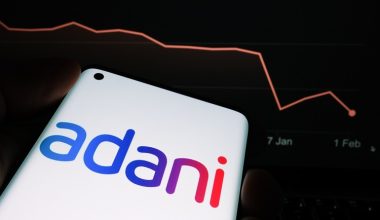The resilience of the Indian equity market has been a bit surprising. After the ultra-hawkish Jackson Hole message from the Fed chief Jerome Powell, the mother market US has been weak. S&P 500 is down around 15 percent this calendar year while the Nifty is up around 3 percent as on 20th September. How do we explain this outperformance?
The global macroeconomic construct is challenging for equities. The three drivers of global growth – US, China, and Euro-Zone – are slowing down. Euro Zone is reeling under an unprecedented energy crisis and is on the brink of recession. China is struggling under the twin impact of a deepening property market crisis and widespread Covid-related lockdowns. US economy continues to be strong with decent job generation but there are clear signs of growth deceleration and unemployment has increased from 3.5 percent to 3.7 percent. The likelihood of US slipping into recession is high. The Fed chief has warned about potential “pains for households and businesses” triggered by rising interest rates. Most central banks are raising interest rates and bond yields have shot through the roof. Global growth is likely to slowdown substantially in 2023 and there is no light at the end of the inflation tunnel, particularly in the developed world. This macro construct is hardly the template for a bull market. But in India the bull is charging.
Is India decoupling from the global market trend? There are bulls who believe that India is decoupling. But that would be a bit unrealistic. Indian economy is integrated with the global economy and there is no way India can remain immune to a sharp global economic slowdown. Sharply lower global growth will impact growth in India too, which, in turn, will impact India’s corporate earnings and market performance.
However, if the global economy escapes from slipping into a deep recession and if the Fed stops tightening with the terminal rate at around 4 percent, there is a good chance that the Indian economy and markets will outperform. Let’s look at the factors supporting such a bull case scenario.
India is the fastest growing large economy now
There is global consensus that this year and the next India will be the fastest growing large economy in the world. India’s GDP is expected to grow around 7 percent in FY23 and 6.4 percent in FY24. India’s corporate earnings is on an upcycle. Corporate profit to GDP which had touched a recent trough of 2 percent in now above 4 percent and is well on track to go beyond 6 percent during the next 3 to 4 years. This will result in an explosive growth in profitability resulting in increasing FPI inflows into India.
Retail investors supporting the market
Retail investors in India have been a source of great support to the market in this challenging environment. Retail investors investing directly and through mutual funds have emerged as a major countervailing force to the FPI ‘hot money’. If we take the period from July 2021 to June 2022 FPIs sold equity worth Rs 4,09,221 crore through stock exchanges. This massive selling didn’t impact the market much since this period witnessed DII buying to the tune of Rs 3,28,493 crore. (Source: NSDL). The number of demat accounts surging from 40.9 million in March 2020 to above 100 million in August 2022 reflects unprecedented retail investor enthusiasm. This has stood the market in good stead.
It is important to understand that retail/DIIs are the dominant players in the market now. The share of retail investors, DIIs and FPIs in the daily cash market volume in the exchanges are 52 percent, 29 percent, and 19 percent respectively. Retail/DIIs are in a formidable position unlike in the past when FPIs used to call the shots. Retail investors have been buying on every dip in this market and DIIs flush with funds have been absorbing the massive selling by the FPIs. This new market paradigm has altered the rules of the game.
FPI s have learned that exit is easy, but entry is expensive
FPIs have learned that exit from the Indian market is easy but entry is difficult and expensive. When FPIs try to buy 5 percent of the stocks that they sold prices surge making their re-entry to the market expensive. India has the best growth and earnings story among the large economies of the world for at least the next couple of years. That’s why FPIs are buying in India now even when the US 10-year bond yield is above 3.4 percent, and the dollar index is hovering around 110.
High valuation is a short-term challenge
Valuation in India is on the higher side particularly when compared to peers. At 18000 Nifty is trading around 22 times forward earnings while PE ratios in the rest of the world are much lower. Even S&P 500 is trading at only 17.5 times. MSCI India Index gained 50 percent during the last 2 years while MSCI EM Index lost around 22 percent. MSCI India Index now trades at PE of 24.5 times while MSCI EM Index trades at PE of 11.2 times. India’s valuation premium of over 100 percent over EM rivals is a bit discomforting. At high valuations markets are always vulnerable to corrections.
But valuation is not high from medium-term perspective
India’s earnings growth has been impressive since 2020. FY 20 Nifty earning was 440. In the Covid year FY21, despite the lockdown, Nifty earnings grew 18 percent. In FY22 Nifty earnings exploded 48 percent to 750. Earnings are up 65 percent in 2 years. FY 23 Nifty earning is likely to be around 870 and at 18000 Nifty is trading above 20 times. But soon the market would be discounting FY 24 Nifty earnings estimated at around 980. This would be just above 18 times FY 24 earnings and the valuation cannot be regarded high. Capital will chase growth and earnings and India is the best emerging market on these counts. In brief, even though valuations can be justified from the long-term perspective, there can be short-term triggers that can impact the market. Therefore, even while remaining optimistic investors







